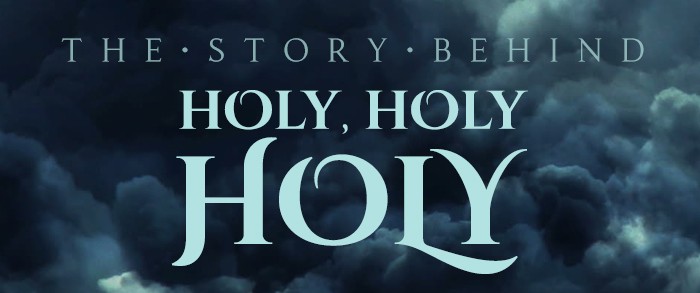Hymncharts offers two versions of Holy, Holy, Holy: a more modern version (Holy Lord Almighty) and a blended one.
In the English vernacular, exclamation points are used to emphasize the importance of something. In the Jewish vernacular, repetition is used. The best example of this is when Jesus used “truly truly” to drive His points home. So, if a repetition of two is equivalent to an exclamation point, a repetition of three is equivalent to someone waving their arms and screaming at you. Of all God’s attributes, there is only one in the Bible where repetition of three is used.
“Holy, holy, holy, is the Lord God Almighty, who was and is and is to come!” – Revelation 4:8
Holy, Holy, Holy was written by a man who revered God as wholly holy; a man who put such an effort into living for God that it eventually killed him.
Reginald Heber was born in Cheshire, England, 1783. He came from well-off parents, allowing him to receive exceptional education throughout his early years. Reginald easily could have taken these blessings for granted, but he did not. For Reginald, failing his education would be to tell God that His gifts are undesirable. Therefore, Reginald learned the value of hard work through his appreciation of God’s gifts. In turn, he received top grades and was praised for his academic ability. Soon after completing his education, Reginald was ordained into the Anglican Church and became a minister.
Rather than using his great education and reputation to find the largest and most glamorous church to lead, Reginald chose a tiny church in the little village of Hodnet, England. Within his congregation, Reginald had a reputation for two things: being a devout man of God, and being a wonderful poet; the perfect recipe for a legendary hymn.
In 1823, Reginald was called to serve in India. He was still young – only 40 years old – and the responsibility was greater than his years. His title was Bishop of Calcutta, which made him leader over missions in India, the Island of Ceylon, and even all of Australia. During his time in India, Reginald worked tirelessly. Once again, he refused to squander this great gift from God. His chief ambition was to build a training school for local clergy so the area would have ministers long after Reginald was gone. Along with building the school, Reginald also traveled across India spreading the gospel.
Over the years, the intense climate and even more intense responsibility wore on Reginald’s health. Through the hardship, he never relented. Such an effort did he give that on one Sunday, directly after an outdoor sermon to a large group of Indians, Reginald dropped dead from heatstroke.
In death, Reginald’s work carried on, for it turned out that during his time at the tiny church in Hodnet, Reginald had written a number of hymns. He never sought publication; perhaps too humble, or perhaps thinking his work not good enough. But his wife saw the beauty in her husband’s work, and she put a collection of her husband’s hymns together and had them published. Fifty-seven hymns made up the collection, and all fifty-seven are still being used to this day. Of the collection, one stood out far above the others:
Holy, holy, holy, Lord God Almighty!
Early in the morning my song shall rise to Thee!
Download Holy, Holy, Holy:
Download sheet music, chord charts, tracks, multitracks and instrumental parts for Holy, Holy, Holy exclusively with a hymncharts subscription. You won’t find this arrangement on any other website.




6 Comments. Leave new
Hello! What is the title, of his wife’s book, with his 57 hymns?
What is her name?
Thank you.
“Holy, Holy, Holy,” is a favorite song of mine. It was my Communion song. I thank him for his gift. I thank his wife, for creating the book.
The collection of 57 hymns is called “Hymns Written and Adapted to the Weekly Church Service of the Year.”
His wife’s name was Amelia Heber.
Greetings,
I understand that there have been changes made to this hymn in various songbooks over the years and I was wondering why some of those changes were made. I’m particularly interested in the changes made in “Hymns for Worship” by RJ Stevens and Dane K Shepherd. Thank you.
According to Wikipedia, variants to the original text in modern hymnals are relatively minor, mostly found in usage by non-trinitarian groups such as the Mormons – where the final line is changed to “God in His glory, blessed Deity!” – or as a push for more gender inclusive language. I could not find any specific information on the changes made in “Hymns for Worship” by RJ Stevens and Dane K Shepherd, but I did find a website that compares different versions of the hymn and explains some of the reasons behind them. For example, some versions change “early in the morning” to “all the saints adore thee” or “all thy works shall praise thy name” to avoid implying that God is only worshipped at a certain time of day. Some versions also change “which wert and art and evermore shalt be” to “who was and is and evermore shall be” to use more modern language. https://www.mrm.org/holy-holy-holy
When was verse 4 added?
The fourth verse was not added later, but was part of the original text by Heber.